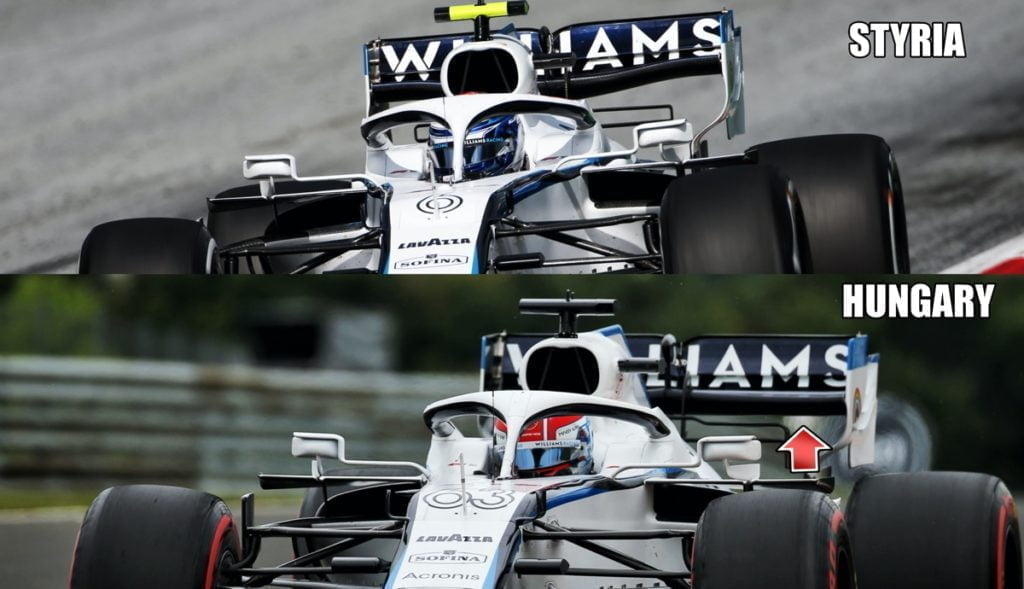In Hungary, several midfield teams delivered their first aerodynamic updates of the 2020 Formula 1 season, and they could prove vital in the very tight battle for ‘best of the rest’ behind Mercedes and their identical twin sisters (in the pink frocks) – you know who we mean.
McLaren, which led the way in Austria behind Mercedes and Red Bull, chose to complete a comparison test in Hungary by running the old specification of floor, without the large Ferrari-style air slot used in Austria (highlighted below).

McLaren added a small deflector to the rear of its engine cover to increase the aerodynamic load and laminate the airflow that travels over the sidepod. The engine cover is the same used in Austria, with wider openings to allow for better cooling compared to the one used at pre-season testing, where temperatures were much colder.
The diffuser in the outer part has also changed, with a less angular and more harmonious shape, compared to the version used in Barcelona. From this image, moreover, it is clear how much rake set-up McLaren is using, a Red Bull inspired set-up which has been copied by much of the paddock bar Mercedes.

Renault didn’t bring anything major to Hungary but a few micro-aerodynamic technical innovations on the RS20. A small aerodynamic wing has been added to the side of the halo which will increase downforce. Renault which appears to be just behind McLaren and Racing Point in terms of competitiveness with ample room for improvement.

A team enjoying some better success is Williams, which no longer occupies the last positions on the grid and is closely threatening Alfa Romeo and Haas, which are both in difficulty partly thanks to the underperforming Ferrari Power Unit.
Williams has a completely revised rear-wing compared to Austria, with a higher downforce approach used in Hungary.











Discussion about this post